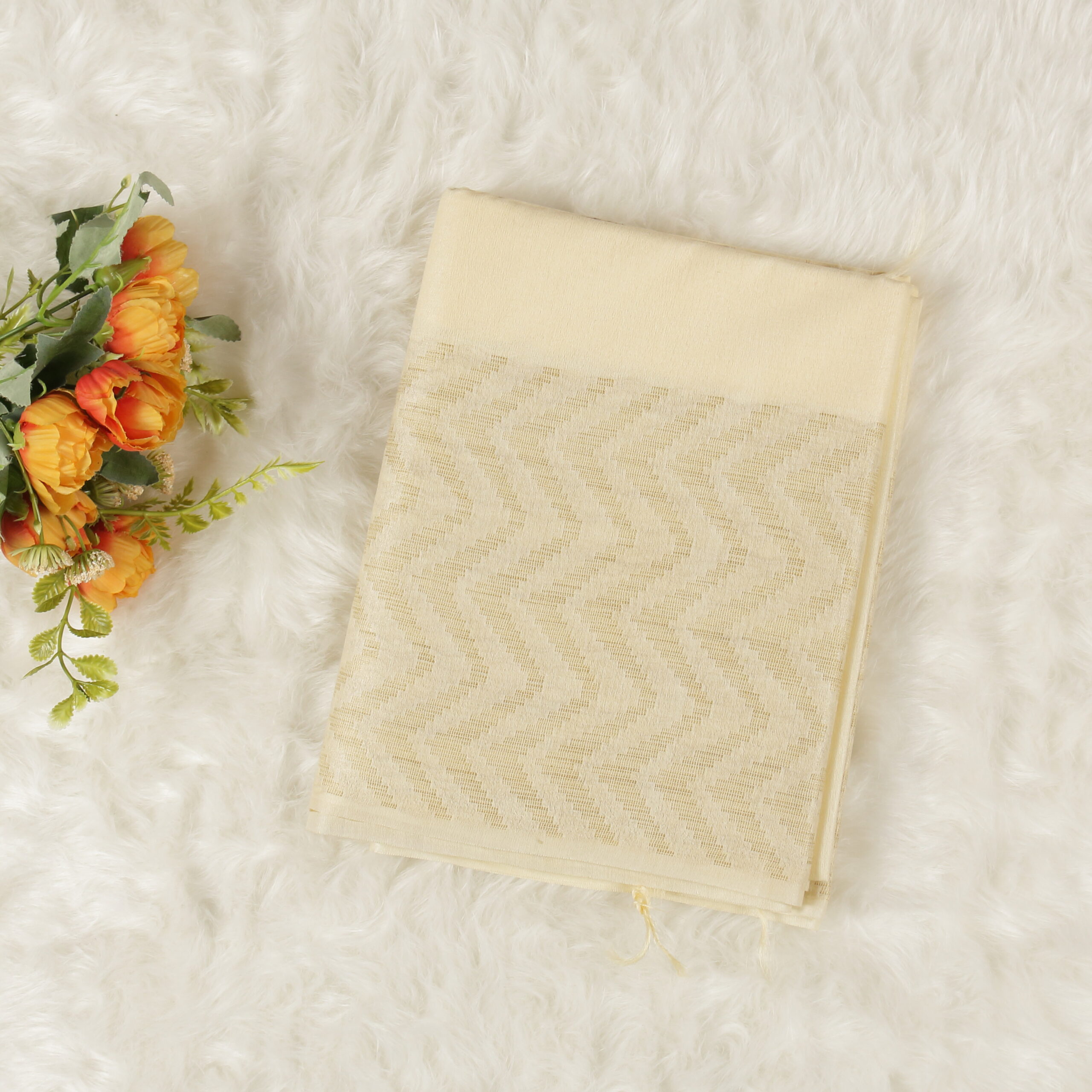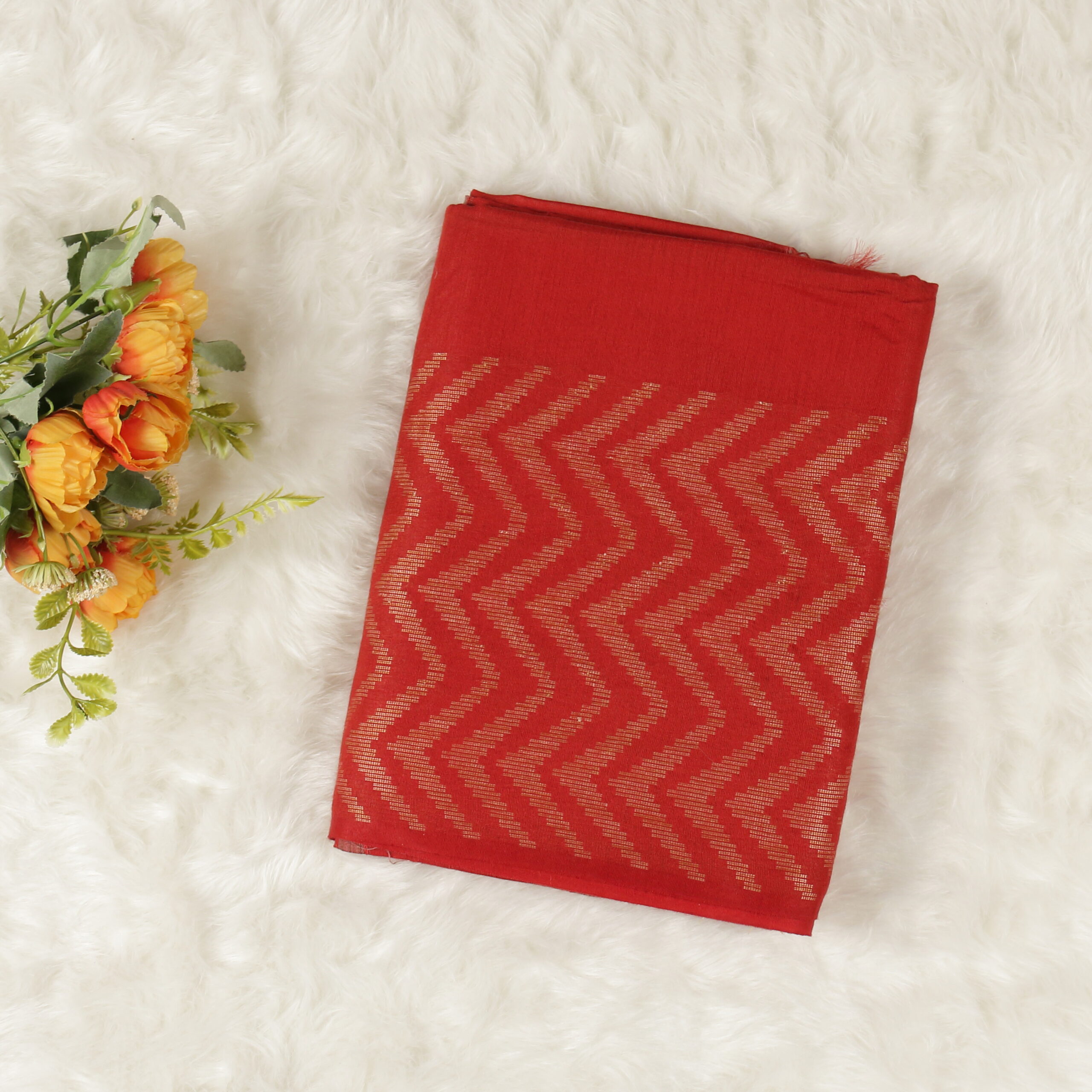Beautiful Ghicha Silk Sarees

What is a Ghicha Silk Saree?
Beautiful Ghicha silk sarees are a particular type of saree that are fashioned from the well-known Ghicha silk, which gives the saree exceptional comfort, elegance, and a glossy texture. Women appreciate these sarees since they are long-lasting due to the material’s tough and resilient construction. Because the fabric is smooth and soft, it can be worn all year round. Its texture is almost exactly like cotton.
The Bihar district’s Bhagalpur is where the majority of Ghicha silk is made. It has been manufacturing silk and sarees in this region of the nation for many years. Bhagalpur’s indigenous women possess extensive training in the craft of Ghicha silk weaving. In roughly three days, they may weave up to ten meters of silk fabric.
Ghicha silk is a perfect option for nearly all traditional Indian occasions and events due to its dull golden color. They are made even more exquisite by the addition of exquisite needlework and tribal designs that draw inspiration from the natural world. Even though the Ghicha saree’s fabric is extremely soft and delicate, its texture means that it doesn’t need any further care or attention. Washing it at home is simple and just requires a small amount of liquid fabric detergent and conditioner. However, in order to prevent color bleeding, it is advised that the Ghicha be dry cleaned, at least initially.
https://sapienstyle.com/product/ghicha-silk-saree-pink-hr0001/It is stated that storing Ghicha silk in soft muslin bags facilitates easy breathing of the fabric, allowing air to travel through and keeping the wearer pleasant, particularly in the heat.
What is the Ghicha Silk Weaving Process?
Designing is the initial stage of the Ghicha silk saree weaving process. The drawings are initially chosen by the skilled artisans, primarily based on differences in weave and color. The preparation of the raw materials comes next. The expert laborers extract a single silk strand from the silkworms’ cocoons by means of their bare thighs. We call this type of silk Ghicha silk.
Hurling
The spools are then moved to skeins following the extraction of silk from the silkworm and subsequent processing to eliminate contaminants. The skeins are rolled into bobbins to create a multi-threaded, thicker yarn when they have dried. Approximately ten skeins are twisted together.
Dyeing
The majority of natural dyes are frequently used to dye Ghicha silk. While the dyeing procedure is the same for all colors, various mordants are used for different colors. For all dyes, the initial step is usually to extract the dyes by boiling the dyeing material in water. After straining the dye solution, the dye is applied to each skein of wet yarn. The skeins are soaked in the dye for a while before being placed in a mordant solution to intensify and hasten the dye’s effects. Using reetha powder to wash the yarn is the final step. After that, the wet skeins are placed in a separate dye bath for roughly 20 minutes.

Beautiful Ghicha Silk Saree
Kasis stone is a regularly used dyeing mordant that is sieved after being dissolved in simple water. After immersing the dyed skeins in this solution for around five minutes, they are removed and rinsed in a reetha solution for a further twenty minutes. Weaving the warp and weft is the first step in the weaving process. Now, the yarn must be spun in accordance with the necessary parameters prior to weaving the warp and weft. After that, the silk yarn is fastened to sizable spools that are set on a creel. The yarn is wound onto the warp beam from the creel. We call this procedure “spooling.”
The cloth roll, a cylinder at the front of the loom where the warp yarns are transported, is where the warp beam is mounted during the weaving process. With the two cylinders supporting them on the loom frame, the warp yarns are prepared for the weft or filler yarns to weave them together to create the woven cloth.
Weaving involves a few basic steps, which are as follows
Shedding
Is the process carried out with the use of harnesses, which are essentially rectangular frames with numerous wires, or heddles, attached. Every single warp yarn that emerges from the beam must to fit through a heddle aperture.
Selecting
The shuttle, which has a bobbin of filling yarn within, inserts the filling yarn through the shed as the heddles are lifted with the aid of the harness, which in turn raises the warp yarn. Picking is the term for this intercrossing of wefts between the warp shed.
The cloth is removed from the loom when the weaving process is finished, cleaned with soapy water, and then let to dry in the sun. Using a spray machine, water is sprayed all over the saree once the cloth has dried. It is important to spray the saree in a manner that ensures the water is evenly distributed across its surface. After that, the fabric is correctly folded and pounded with a large hammer, or kundi. This process of beating contributes to the weave’s permanence.
Now that the fabric is finished, it may be calendared, which is essentially a mechanical finish that is applied by pressing it between a number of rollers to smooth it out and help the saree look less wrinkled.
Gichha Saree Features
Texture and Appearance
The unique texture of Gichha sarees is a result of combining the smoothness of cotton with the roughness of Gichha silk. The silk’s natural sheen lends a hint of elegance, while the fabric’s natural slubs give it a rustic character. Natural dyes are used to enhance earthy tones found in sarees, such as beige, gold, and brown. These hues have cultural importance as well as aesthetic appeal; they stand for purity and a connection to the natural world.
Gichha silk’s natural sheen is similar to Tussar silk’s, which is sometimes called “wild silk” because of its raw, unpolished look. Gichha sarees are distinguished from other silk sarees by its distinct texture, which appeals to people who value both history and rustic elegance.
Comfort and Durability
Gichha sarees are useful in addition to being gorgeous. The fabric’s breathability guarantees comfort, particularly in hotter regions, and its durability makes it appropriate for daily use. Gichha silk is a natural fiber that is hypoallergenic and appropriate for sensitive skin, in contrast to synthetic materials. Gichha sarees get softer with every wash over time, improving their comfort level without sacrificing their robustness. Because of this characteristic, they are a great complement to any outfit because they continue to be strong and beautiful even after years of use. These sarees’ resilience is on par with Tussar silk sarees, which are renowned for their long lifespan and resilience to abrasion.
Changes and Designs
Shade and Dyeing MethodsBecause natural dyes are used, gichha sarees come in a multitude of colors. These dyes produce rich, vivid colors devoid of dangerous chemicals because they are frequently derived from plants, minerals, and other natural sources. Shades of red, orange, yellow, and green are common colors; each has a unique cultural meaning. For example, yellow is connected to fertility and is used at religious events, while crimson is symbolic of purity and is frequently worn during weddings. Gichha sarees undergo a painstaking dying procedure. For the yarn to assist the dye adhere to the fiber, it is first soaked in a mordant solution.
The yarn is dyed, and depending on the weather, it may take several days to wash and dry in the sun. The colors are guaranteed to be vivid, long-lasting, and to fade very little over time thanks to this meticulous dying procedure.
Patterns and ElaborationsGichha sarees are distinctive and eye-catching because of their elaborate patterns and embellishments. Commonly utilized traditional motifs include paisleys, peacocks, and tribal emblems. These designs are typically block-printed or hand-embroidered, giving each saree an extra touch of handmade artistry. In certain styles, zari, or metallic thread, is used to adorn the saree’s border and pallu, lending an air of refinement. These sarees are appropriate for both formal and informal settings because they combine the richness of zari with the rustic charm of Gichha silk. The elaborate and detailed designs made possible by the combination of silk and cotton threads are both aesthetically pleasing and long-lasting.
Impact on the Economy and Society
Artisan Communities
A significant economic activity in rural India is the production of Gichha sarees, especially in areas like West Bengal, Jharkhand, and Bihar. In some areas, the production of silk is not only a craft but a way of life, supporting entire communities. Over 4.3 million people are employed in India’s handloom industry, many of whom weave silk, according to the Textile Ministry of India. Men and women can find work in the Gichha saree business, which also helps to maintain traditional skills and foster economic stability in these areas.
Apart from its economic advantages, the Gichha saree business is essential for maintaining cultural legacy. Craftspeople contribute to the preservation of historic methods and patterns by weaving these sarees and passing them on to next generations. As a large proportion of the workforce is made up of women, the industry also helps to empower them. Women are able to manage generating an income and taking care of their families by working from home in many circumstances.
Demand in the Market and Recognition Worldwide
The demand for Gichha sarees has increased in recent years due to the growing admiration for handcrafted textiles. They have gained popularity not only in India but also in other international markets. The demand for Gichha sarees has increased due to the global fashion industry’s trend towards sustainable and ethical fashion. Customers are looking for products that are socially and environmentally responsible.
Over the past ten years, India has steadily increased its handloom exports, particularly sarees, to major buyers in the US, Europe, and Japan. A global audience that appreciates authenticity and environmental friendliness finds the Gichha saree particularly appealing because of its blend of traditional artistry and sustainable production processes. The Indian diaspora, who value the link to their cultural heritage, is another group that loves sarees.
Fashion and Current Significance
Fashion’s Versatility
Gichha sarees have become a flexible and contemporary fashion mainstay, beyond their traditional bounds. They are appropriate for a variety of situations, including formal affairs, festive festivities, and casual daywear, thanks to their distinctive fusion of rustic charm and elegance. Depending on the occasion, the saree can be dressed up or down thanks to the unique texture and gloss of Gichha silk.
Gichha sarees appear attractive but subdued when worn with basic shirts and little jewelry for daily wear. They are comfortable for extended periods of time due to their breathable fabric, particularly in India’s hot and muggy weather. However, to further emphasize their traditional appeal, Gichha sarees can be dressed up for special events with bulkier accessories like bangles, bold necklaces, and embroidered blouses.
The potential of Gichha sarees in contemporary fashion has been acknowledged by fashion designers. Gichha silk is becoming a popular material among modern designers, who use it to create avant-garde fusion clothing that combines Western inspirations and traditional Indian forms. Gichha silk, for instance, has been used to create lehengas, saree dresses, and even fitted skirts and jackets. Younger generations who value the tradition of traditional fabrics but prefer a more contemporary and adaptable style are drawn to these fusion ensembles.
Upkeep and Scenario
Cleaning and Keeping in Store
Beautiful Ghicha sarees require upkeep in order to stay beautiful and long-lasting. Gichha sarees are fragile, therefore it’s best to dry clean them, especially for the first few washes, to keep the colors and texture intact. It is recommended to use cold water and mild detergents while washing at home. Hand washing the sarees is the gentlest way to prevent damage to the silk fibers.
When drying, it is crucial to keep the saree out of direct sunlight to preserve its natural sheen. Alternatively, letting the fabric dry in the shade will preserve its original texture and color. Gichha sarees should be folded carefully and stored in a muslin cloth or another soft, breathable material to keep out moisture and dust. The saree can avoid mildew and musty smells by being stored in a cool, dry location.

